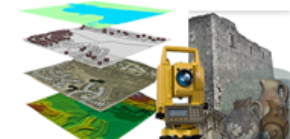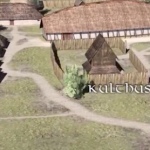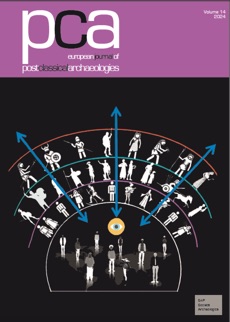Explore one of northern Europe’s largest Viking settlements in Denmark through this digital reconstruction.
The largest treasure ever found in Denmark, a 1.83 kilogram heavy neck ring of solid gold, was ploughed up on a field near the lake in 1977.
After the discovery, the National Museum of Denmark began snooping around the area with metal detectors. But this was only the beginning.
“In about 1990, amateur archaeologists started using metal detectors in the field further north along the banks of the lake. Here they began to find jewellery and parts of weapons all the way along the edge of the lake. This is when we “woke up” started taking notice,” says Lars Jørgensen, research professor at the Danish Antiquity section of the National Museum.
More diggings revealed human sacrifices from the Viking Age. This was the first evidence of human sacrifices during the Viking age.
The Tissø excavations soon turned out to involve one of the largest Viking settlements in Northern Europe.
In the animation above, the National Museum shows us round the entire 50 hectare site.
Viking settlement in Northern Europe
Excavations were conducted every year at Tissø from 1995 to 2003. The result was an immense amount of discoveries.
“This is the best example if a Viking settlement we have in Northern Europe, primarily because it is so easy to dig,” says Jørgensen, who has been working intensively on the Tissø site.
Over the years more than 12,000 items have been found, and together they tell the story of a group of extremely wealthy men and women who inhabited the area for some 500 years between 550 and 1050 A.D.
But nothing beats the gold treasure that set it all going. Even today, the 30-centimetre diameter neck ring — better known as the ‘Tissø Ring’ — was the reserve of wealthy people.
In the Viking age, it was highly likely that a person had to be a member of the nobility to own such an extraordinary gold ring, and archaeologists have gradually become convinced that Tissø was the backdrop to a royal residence.
The aristocratic architecture of the buildings contributes to this assumption.
Sheds new light on similar finds
Two things make the Tissø excavations very special. One is that they have given archaeologists the opportunity to follow the comings and goings of a royal residence over a period of 500 years.
“The other interesting thing is that there is a wealth of ritual facilities, some of them in and around the chieftain’s residence, where we are certain that there are ritual buildings and sacrificial sites, and partly in the area as a whole, where there are several other ritual sites,” says Jørgensen.

In 2011, archaeologists found a religious site at the highest point in the area. Here, the inhabitants ate ritual meals — and sacrificed jewelry and human bones.
For the first time, archaeologists are reasonably certain they have proof that written reports of human sacrifices in the Viking age are authentic enough. Until 2011, it had been doubted whether there had been human sacrifices during the Viking age — the fact that they went about sacrificing real living people doesn’t exactly add clout to the Vikings identity.
“But after Tissø we started taking a look at some of old finds of human bones at Viking sites,” explains Jørgensen.
Vikings sacrificed small children
This led to the resurrection of an old theory about some peculiar sites — which resembled wells — at Trelleborg, one of Denmark’s six ring castles from the Viking age.
When the wells were excavated in the 1930s, the archaeologist involved suggested that they might’ve been sacrificial wells. But the theory was ignored — at least until the finds at Tissø gave grounds to reconsider them.
In the wells they found bone remnants of five people — four of them were small children aged 4 to 7.
Child sacrifices were ‘the ultimate’
Jørgensen explains that the Vikings’ belief in the Nordic gods was significant in relation to practically every activity in life, its everyday aspects as well as aspects of it concerning warriors in battle.
This is why the Vikings often sacrificed jewellery, weapons, tools and even animals to the gods to gain their favours. But human sacrifices were probably something very special, says Jørgensen.
“They constituted the ultimate sacrifice, especially when children were involved — they only did anything like that if they wanted to re-establish connections to the gods when things had gone seriously awry,” he says.
da sciencenordic.com






